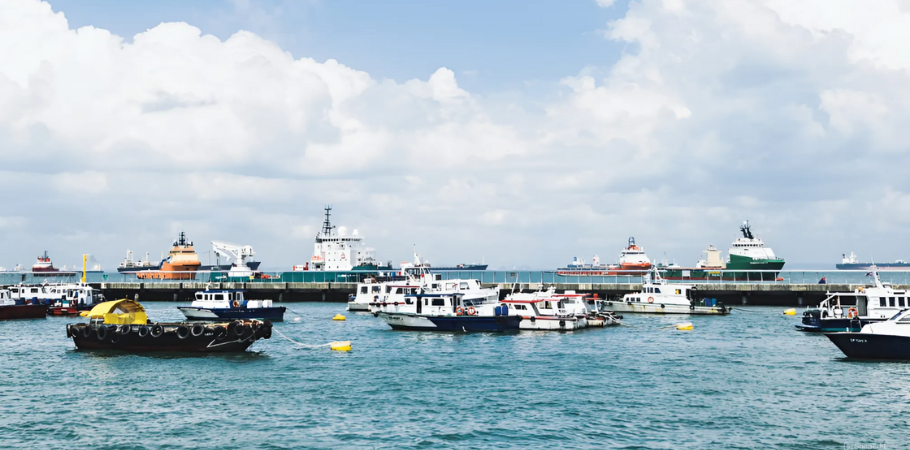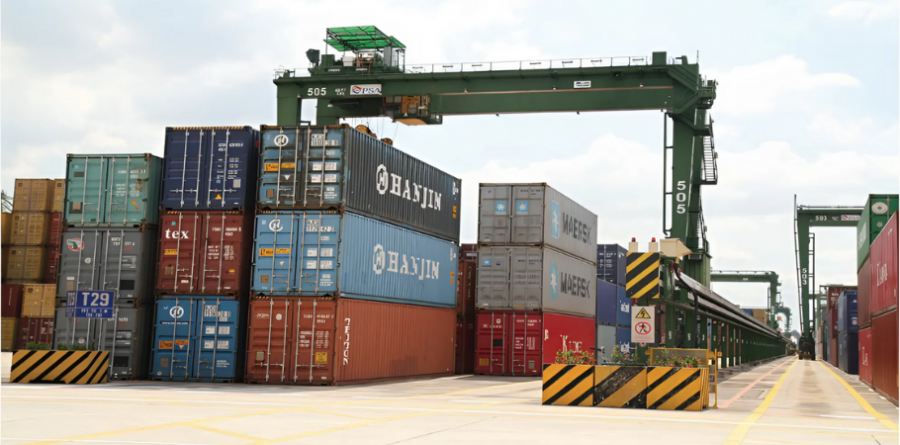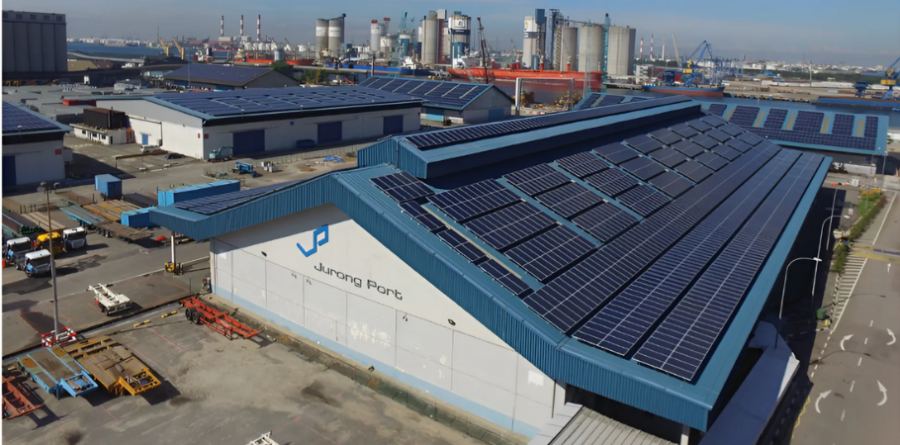
Singapore’s Port Terminals Decarbonisation is a crucial initiative within the Maritime Singapore Decarbonisation Blueprint: Working Towards 2050. This blueprint lays out ambitious and detailed long-term strategies aimed at creating a sustainable maritime industry in Singapore. Developed by the Maritime and Port Authority of Singapore (MPA) in collaboration with industry stakeholders, it plays a key role in fulfilling Singapore’s commitments under international agreements like the United Nations’ 2030 Sustainable Development Agenda, the Paris Agreement, and the Initial IMO Strategy. This article will focus on one of the blueprint’s seven critical areas: the decarbonisation of port terminals.
Singapore’s Port Terminals Decarbonisation: Commitment to Sustainability
Singapore’s port terminals are set on a course towards a low-carbon future, primarily through the integration of cleaner energy, automation, and digitalisation. By 2030, the goal is to cut emissions by at least 60% compared to 2005 levels, despite anticipated growth in port activity. By 2050, these terminals aim to achieve net zero emissions, aligning with Singapore’s broader national emissions targets.
Through these decarbonisation efforts, Singapore seeks to maintain its competitive edge as a global maritime hub while contributing to environmental sustainability.
Port terminal operators, PSA Corporation Ltd (PSAC) and Jurong Port Pte Ltd (JPPL), are at the forefront of Singapore’s decarbonisation initiatives. Both operators have developed comprehensive strategies to achieve net zero emissions by 2050. These strategies encompass a range of actions, including the greening of port handling equipment, vehicles, and terminal buildings, as well as improving energy efficiency and adopting cleaner energy alternatives.

To further reduce emissions, PSAC and JPPL have deployed advanced smart systems and solutions aimed at enhancing operational efficiency. These systems minimise idle or waiting time for vessels and vehicles at the port, reducing unnecessary fuel consumption and emissions. Additionally, both operators are working on projects to improve energy management within the terminals, leading to a significant reduction in the carbon footprint of port operations.
In fact, by implementing smart technologies, idle times for vessels are reduced, cutting down on fuel usage and emissions.
Singapore’s Port Terminals Decarbonisation: Emission Reduction Targets
In partnership with MPA and other public agencies, PSAC and JPPL are exploring the creation of port-centric industrial ecosystems. These ecosystems will be designed to bring related industries closer to the port terminals, reducing transportation distances and emissions. This initiative aims to further cut emissions by optimising resource use and shortening supply chains.
Establishing industrial ecosystems around port terminals can significantly lower carbon footprints by streamlining logistics and sharing resources.
PSAC and JPPL have set clear targets to reduce total emissions from port operations by at least 60% by 2030, using 2005 as a baseline. By 2050, the goal is to reach net zero emissions. These targets reflect the operators’ commitment to aligning with Singapore’s broader environmental goals.
Greening Port Equipment and Vehicles
PSAC is committed to phasing out diesel-based equipment and vehicles at its container terminals, transitioning instead to electric and cleaner energy sources. This includes replacing older diesel-powered cranes and prime movers with electric versions. By fully transitioning away from diesel by 2050, PSAC aims to significantly cut its direct emissions.
For example, switching from diesel to electricity for cranes and prime movers will reduce emissions by over 30%.
JPPL’s Green Initiatives
JPPL is also implementing greener solutions, such as using electric balance cranes and conveyor belts for handling aggregates and steel cargo. These innovations will lead to greater energy efficiency and lower emissions in cargo handling. Additionally, JPPL plans to introduce cleaner alternative fuels like biodiesel for its forklift fleet by 2026.
The use of electric cranes and biodiesel-powered forklifts will help JPPL achieve a 15-20% reduction in emissions.
Reducing Grid Electricity Emissions
As part of Singapore’s energy transition, the power sector is moving towards decarbonisation, which will allow port operators to reduce their indirect emissions. Both PSAC and JPPL are working with industry partners to source green electricity from the regional grid, contributing to lower emissions from electric-powered port operations.
Development of Green Buildings and Solar Energy Generation
PSAC has been pioneering the development of green buildings at its terminals to reduce energy consumption. These buildings feature designs that minimise heat gain, LED lighting, and smart systems for efficient energy and water use. Notably, PSAC’s projects have received accolades for their environmental sustainability, including the Green Mark Platinum awards.

Both PSAC and JPPL are investing in solar energy to further reduce their indirect emissions. JPPL’s solar facility, covering the roofs of its warehouses, generates a significant portion of the port’s electricity needs. PSAC is also expanding its solar photovoltaic installations, with plans to double its solar energy generation by 2030.
Conclusion
Singapore’s Port Terminals Decarbonisation is a cornerstone of the nation’s broader environmental strategy, focusing on reducing emissions by 60% by 2030 and achieving net zero by 2050. Through the adoption of cleaner energy, automation, and digitalisation, Singapore’s port terminals are paving the way for a sustainable maritime future. The commitment of PSAC, JPPL, and MPA underscores Singapore’s leadership in global maritime decarbonisation efforts.
See more: ESG Singapore: Opportunities and Challenges in a Growing Market


